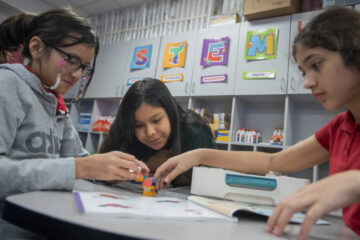
If Kiribati’s 33 islands were layered on top of a map of the United States, they would cover the entire nation from north to south and west to east. The only nation in the world that covers all four hemispheres is Kiribati! Despite their trivial value, these distinctive geographical features make it extremely difficult to provide services, including education to all children. However, through the Ministry of Education (MOE), the government is committed to ensuring that all Kiribati children have access to an equitable and high-quality education, participate in inclusive learning for students with diverse needs, and work with partners like the Global Partnership for Education (GPE) and Australia’s Department of Foreign Affairs and Trade (DFAT).
In order to benefit the entire education system, MOE’s priorities, outlined in our Sector Strategy and Partnership Compact, include removing obstacles to learning and making education truly inclusive and equitable. Putting money into teachers and technology for inclusive education We must improve the infrastructure of the schools so that students have the tools they need to learn in a safe and conducive environment to achieve their full potential and become productive citizens, despite the logistical challenges of reaching students spread out over thousands of miles. Better education begins with better instruction; teachers must be provided with ongoing professional development and the necessary training, skills, and support to teach all students effectively.
We recognize the significance of investing in technology to overcome these obstacles and promoting technology solutions due to our geographical location and high teacher turnover. The Learning Passport App for remote learning during COVID-19 school closures is a classic example. Many students were able to continue their education from home thanks to online lessons and radio and video programs for those who were unable to access the Learning Passport App. GPE’s financial support during this difficult time helped us develop strategies for remote learning.
Technology must be part of the solution to reach children in remote islands, and teachers need to be trained to master these tools and techniques. Not only will ICT have an effect on how children learn, but it will also change how the education system as a whole is run. We collaborate with special needs NGOs and line ministries to reach children with disabilities. With these partners, we talked about how to meet the needs of students with disabilities and make sure they get the right support and resources at the recent National Inclusive Education Summit. The Kiribati Inclusive Education Policy and the promotion of greater inclusivity in schools were also agreed upon by the participants. The key is collaboration and coordination among all actors.
It is essential to collaborate with all education stakeholders and coordinate our efforts because Kiribati is so dispersed and the ministry of education is the largest ministry with numerous stakeholders. Our team is represented by line ministries, mission schools, civil society organizations, teachers’ unions, businesses, parents, and communities on a variety of Committees. The Education Partners in Kiribati (EPiK) Forum and the local education group are two additional mechanisms.
The MOE, in collaboration with development partners and line Ministries, organizes the EPiK Forum annually. The EPiK Forum’s main goal is to let MOE and development partners openly talk about important education priorities and possible assistance in accordance with the Education Sector Strategic Plan (ESSP). The local education group’s work, which coordinates the support and assistance of the Global Partnership for Education (GPE) under the direction of DFAT as the coordinating agency, serves as a complement to the EPiK Forum and enables quicker consultations and actions when required. Development partners and other education stakeholders make up the group, which meets to exchange information and learn from one another.


